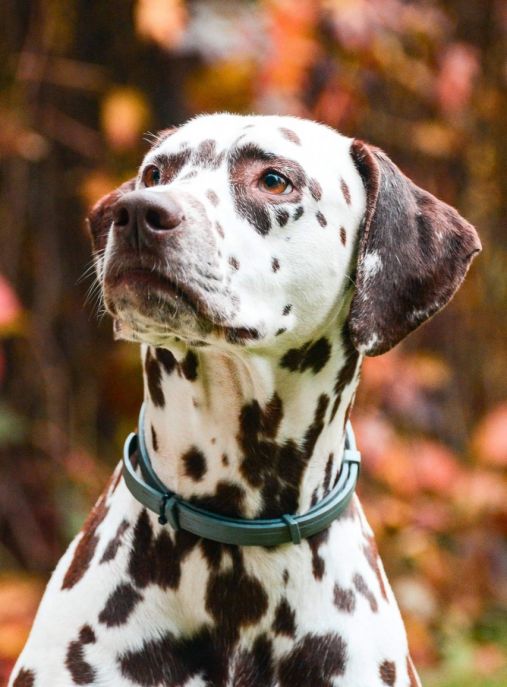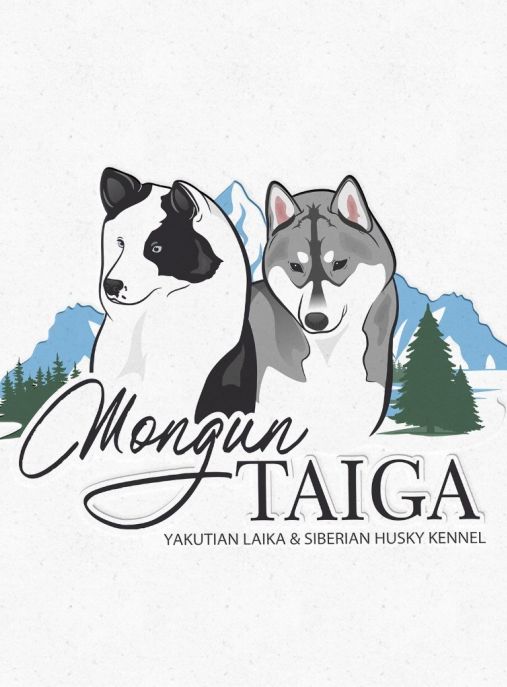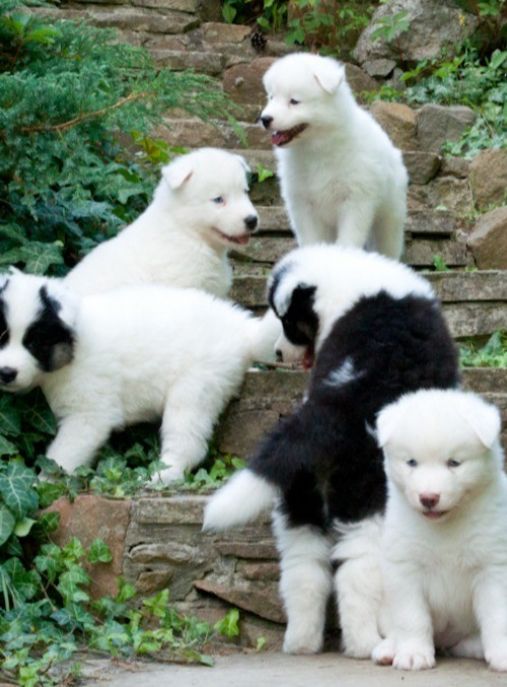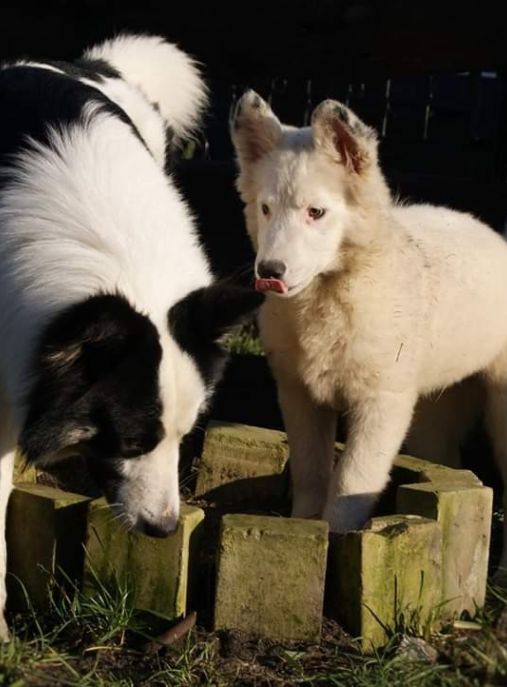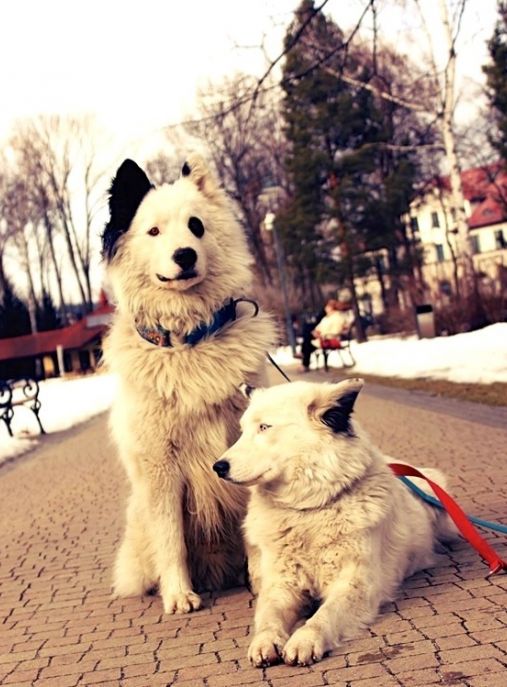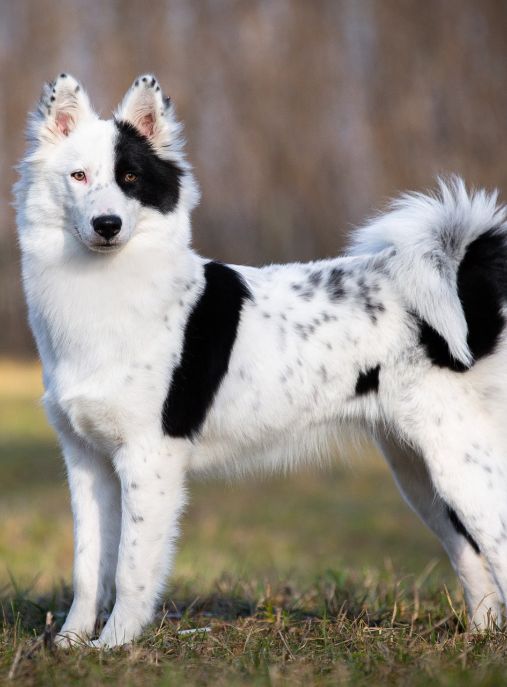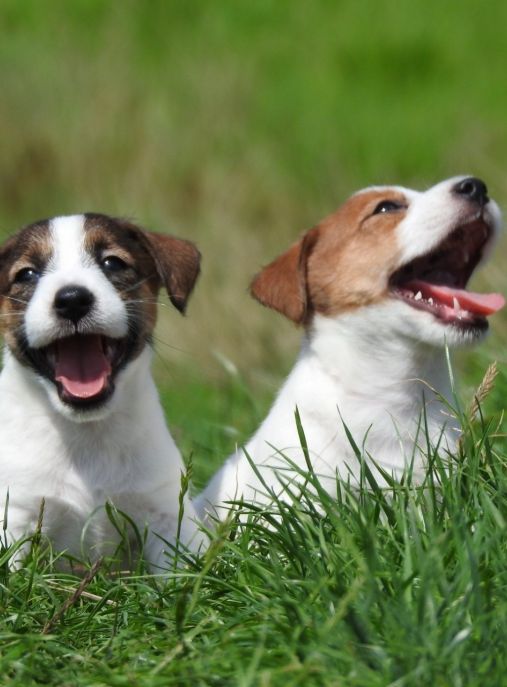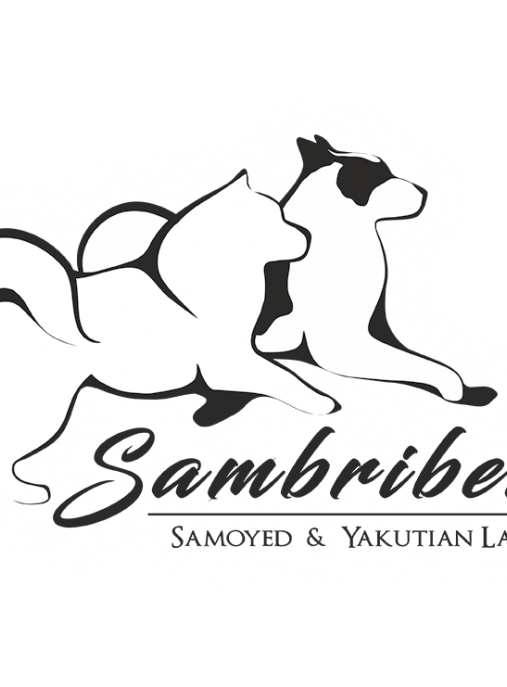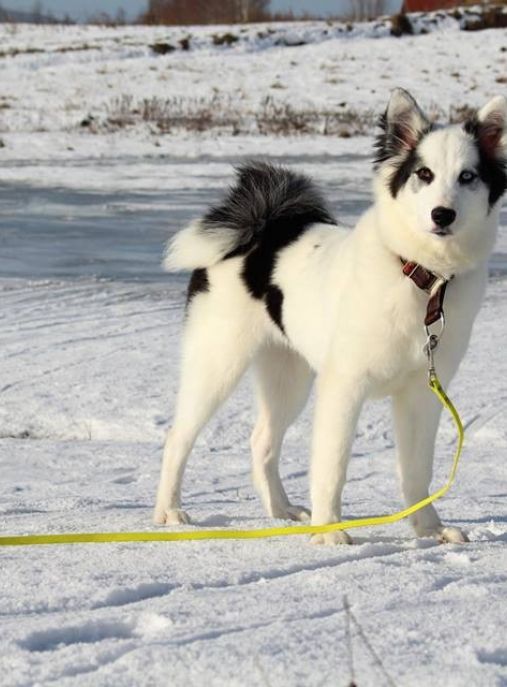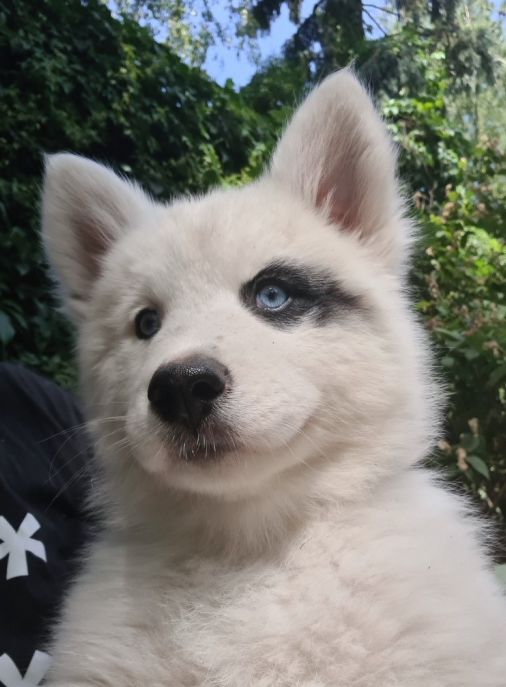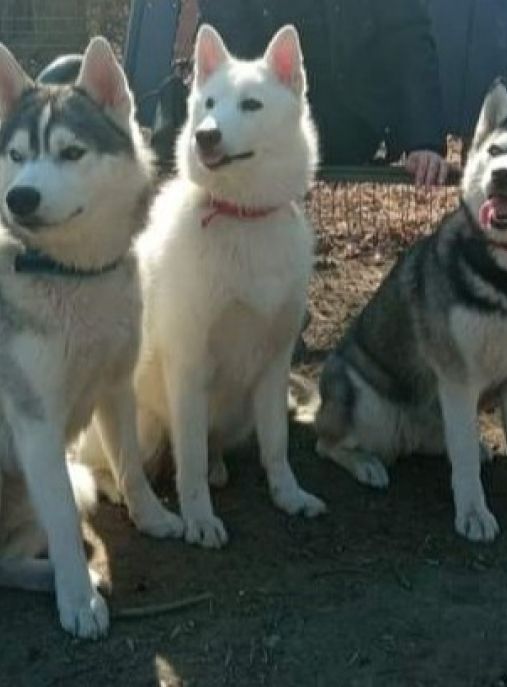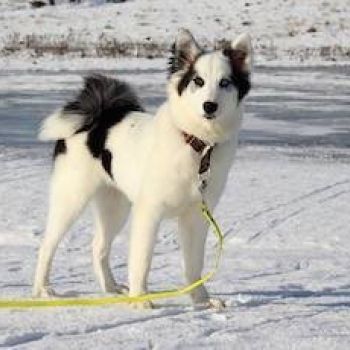The Yakutian Laika is a remarkable and ancient breed of dog that hails from the Yakutia region of Siberia, Russia. Also known as the Yakut Laika or the Siberian Laika, this breed is highly valued for its endurance, versatility, and ability to thrive in harsh Arctic conditions. With its striking appearance and exceptional working abilities, the Yakutian Laika has gained recognition and admiration worldwide.
The history of the Yakutian Laika dates back thousands of years, with its origins deeply rooted in the indigenous cultures of the Yakut people. These dogs were bred by the Yakuts, a nomadic group of people who relied on their dogs for various tasks, including herding reindeer, pulling sleds, and providing companionship. The Yakutian Laika played an integral role in the survival and livelihood of the Yakut people, and their breeding was carefully managed to ensure their suitability for the demanding Arctic environment.
According to the FCI (Fédération Cynologique Internationale) typology, the Yakutian Laika belongs to Group 5: Spitz and Primitive Types, Section 1: Nordic Sledge Dogs. This classification places them alongside other renowned Arctic breeds such as the Siberian Husky, Alaskan Malamute, and Greenland Dog. These dogs share common characteristics, including a thick double coat, erect ears, and a curled tail, which are adaptations to the extreme cold.
The Yakutian Laika is primarily a working breed, excelling in various tasks such as sled pulling, herding, hunting, and guarding. Their incredible endurance and strength make them well-suited for long-distance travel and heavy pulling. In recent years, they have also gained popularity as family pets due to their loyal and affectionate nature. However, it is important to note that their working instincts are deeply ingrained, and they require regular physical and mental stimulation to thrive.
In terms of physical characteristics, the Yakutian Laika is a medium-sized dog with a well-muscled body and a strong bone structure. Males typically stand between 21 to 24 inches (53 to 60 cm) at the shoulder, while females are slightly smaller, ranging from 20 to 23 inches (51 to 58 cm). The breed's weight varies between 40 to 55 pounds (18 to 25 kg) for males and 35 to 50 pounds (16 to 23 kg) for females.
One of the most striking features of the Yakutian Laika is its dense and weather-resistant double coat. The outer coat is straight and coarse, providing protection against the elements, while the undercoat is soft and insulating. This coat comes in various colors, including white, black, gray, and red, often with distinctive markings on the face and body. Regular brushing is necessary to maintain the coat's health and prevent matting.
The life expectancy of the Yakutian Laika is typically between 12 to 15 years, although some individuals have been known to live even longer with proper care. This breed is generally healthy and resilient, thanks to its long history of natural selection in the harsh Arctic environment. However, like all dogs, they may be prone to certain health issues, including hip dysplasia and eye conditions. Responsible breeders conduct health screenings to minimize the risk of these genetic disorders.
Apart from their exceptional working abilities, the Yakutian Laika possesses several interesting traits. They are known for their intelligence, independence, and strong prey drive, which can make training a challenge for inexperienced owners. Early socialization and consistent, positive reinforcement training methods are crucial to ensure a well-behaved and well-adjusted dog.
Furthermore, the Yakutian Laika has a unique ability to adapt to extreme temperatures. Their thick coat provides insulation in freezing conditions, while their skin is highly resistant to frostbite. In warmer climates, they shed their undercoat to regulate body temperature effectively. This adaptability makes them suitable for a wide range of climates, although they are most comfortable in colder environments.
In conclusion, the Yakutian Laika is a remarkable breed with a rich history and exceptional working abilities. Their close bond with the Yakut people and their ability to thrive in the harsh Arctic conditions have shaped them into a versatile and resilient breed. Whether as working dogs or loyal companions, the Yakutian Laika continues to captivate dog enthusiasts worldwide with its striking appearance, unwavering loyalty, and unwavering spirit.

The Yakutian Laika is a breed with a well-rounded and engaging character, reflecting its history as a versatile working dog in harsh climates. Here are some key aspects of the Yakutian Laika's temperament and behavior:
- Intelligent and Trainable: Yakutian Laikas are known for their intelligence and quick learning ability. They are eager to please and respond well to positive reinforcement training methods. However, their intelligence also means they can become bored easily, so it's important to keep training sessions short, fun, and varied.
- Energetic and Active: This breed has a high energy level, reflecting its working dog heritage. They require regular, vigorous exercise to stay healthy and happy. Without adequate physical and mental stimulation, they may resort to destructive behaviors out of boredom.
- Sociable and Friendly: Yakutian Laikas generally have a friendly demeanor. They are known to be good with children and can get along well with other dogs and pets if properly socialized from a young age. However, their sociability doesn't necessarily translate to immediate friendliness with strangers; they can be reserved and may take time to warm up to new people.
- Loyal and Protective: Loyalty is a hallmark of the Yakutian Laika. They develop strong bonds with their families and can be very protective. This protective instinct makes them excellent watchdogs, as they are always alert and aware of their surroundings.
- Vocal and Communicative: Like many spitz-type breeds, the Yakutian Laika is quite vocal. They use their voice to communicate with their human family and express their emotions. Owners should be prepared for a dog that howls, barks, and makes other noises, especially if trying to communicate or if left alone for too long.
- Independent Yet Affectionate: While they are loving and enjoy being part of the family, Yakutian Laikas also have an independent streak. They appreciate time with their human companions but can also entertain themselves. Early training and socialization are key to ensuring their independence doesn't turn into stubbornness.
- Adaptable but Prefer Cold Climates: These dogs are adaptable to various living situations, provided they get enough space and exercise. However, they are particularly suited to cold climates due to their thick double coats. In warmer environments, owners need to take extra precautions to ensure they don't overheat.
- Prey Drive: Given their hunting background, Yakutian Laikas have a developed prey drive. They may chase after small animals, which means a secure yard and leash training are important. Their prey drive can be managed with training and by providing them with plenty of exercise and mental stimulation.
Grooming a Yakutian Laika is an essential aspect of their care, given their thick double coat and active lifestyle. Here's a detailed guide to grooming your Yakutian Laika:
1. Brushing:
Frequency: Due to their dense double coat, Yakutian Laikas need regular brushing to minimize shedding and prevent matting. Brush them at least 2-3 times a week, increasing to daily during shedding seasons (spring and fall).
Tools: Use a slicker brush, an undercoat rake, or a de-shedding tool to effectively remove loose hair and undercoat. A metal comb can help with detangling any knots or mats, especially around the ears, neck, and tail.
Technique: Brush in the direction of hair growth, paying special attention to areas prone to matting. Be gentle to avoid irritating the skin.
2. Bathing:
Frequency: Yakutian Laikas do not need frequent baths, as it can strip their coat of natural oils. Bathe them only when necessary, typically every 3-4 months or if they get particularly dirty.
Shampoo: Use a mild dog-specific shampoo that doesn't strip essential oils. Conditioner can help keep their coat smooth and easier to manage.
Drying: After bathing, towel dry them gently, and if possible, let them air dry. If using a blow dryer, use a low heat setting to avoid overheating and drying out their skin.
3. Coat Clipping:
General: Generally, Yakutian Laikas do not require coat clipping due to their natural shedding. Their coat helps regulate their temperature in both cold and warm weather.
Paw Care: Trim the hair between their paw pads to prevent ice, snow, or debris from building up, which can cause discomfort or lead to infections.
4. Nail Trimming:
Frequency: Trim their nails regularly, approximately every 3-4 weeks. If you hear their nails clicking on the floor, it's time for a trim.
Tools: Use a proper dog nail clipper or grinder. Be cautious to avoid cutting the quick, which can cause bleeding and discomfort.
5. Ear Cleaning:
Frequency: Check their ears weekly for signs of infection, irritation, or wax build-up.
Cleaning: Use a vet-recommended ear cleaner. Gently wipe out the ear, avoiding going too deep into the ear canal.
6. Teeth Brushing:
Frequency: Ideally, brush their teeth daily or at least 2-3 times a week to prevent dental issues.
Tools: Use a dog-specific toothbrush and toothpaste. Never use human toothpaste, as it can be toxic to dogs.
7. Eye Care:
Routine: Check their eyes regularly for any signs of irritation or discharge.
Cleaning: Wipe away any dirt or discharge with a damp, soft cloth, using a different part of the cloth for each eye to avoid cross-contamination.
General Grooming Tips:
Start Early: Accustom your Yakutian Laika to grooming from a young age. Make it a positive experience filled with praise and treats.
Regular Checks: While grooming, check for any lumps, bumps, or signs of skin issues. Early detection of problems can prevent more serious conditions.
Professional Groomer: If grooming is too challenging or if you're unsure about certain aspects, consider visiting a professional groomer, especially for tasks like nail trimming.
Proper grooming is not only about maintaining the Yakutian Laika's appearance but also about ensuring their health and comfort. Regular grooming sessions are also a great way to bond with your dog and check for any signs of health issues. By maintaining a consistent grooming routine, you'll help your Yakutian Laika look and feel their best.
The Yakutian Laika typically sports a dense double coat that comes in a variety of colors and patterns. The most common coat colors and combinations include:
White: Pure white is a common and recognizable color for the Yakutian Laika. It may be entirely white or have patches of other colors.
Black and White: Black patches or spots on a white background are typical for the breed. The distribution and size of the black areas can vary greatly from dog to dog.
Grey and White: Similar to the black and white coat but with grey areas instead. This can range from light silver to darker grey.
Red or Brown and White: This includes various shades of red and brown, often mixed with white. These can appear as distinct patches or more blended with the white.
Sable: Some Yakutian Laikas exhibit a sable coat, where the hair is banded with different colors, typically darker at the tips and lighter near the base.
Piebald and Pinto: These terms refer to the patterns of color, where large patches of color are interspersed with white. Piebald typically means more white than color, while pinto can have a more even distribution.
Regardless of the coat color, the texture is typically the same across all Yakutian Laikas — a dense, straight outer coat with a soft, thick undercoat. This double coat provides insulation and protection against harsh climates, a testament to their heritage as a working breed in cold Siberian regions. Regular grooming is important to maintain the health and appearance of their coat, regardless of its color. When considering a Yakutian Laika, it's important to focus on their health and temperament as much as their coat color, as these aspects are vital to their well-being and suitability as a pet.
Yakutian Laikas are generally healthy dogs, but like all breeds, they are susceptible to certain health conditions. Responsible breeding practices and proper care can mitigate many health issues. Here are some health considerations for the Yakutian Laika:
1. Hip Dysplasia:
Description: A common condition in many dog breeds, hip dysplasia is a malformation of the hip joint that can lead to pain, lameness, or arthritis.
Prevention/Care: Screening breeding dogs for hip dysplasia, maintaining a healthy weight, and providing appropriate exercise can help manage this risk.
2. Eye Disorders:
Common Issues: Including Progressive Retinal Atrophy (PRA), cataracts, and glaucoma, these conditions can lead to impaired vision or blindness.
Prevention/Care: Regular veterinary eye exams can help detect issues early. Breeding dogs should be screened for heritable eye conditions.
3. Ear Infections:
Risk Factors: Their erect ears can help minimize infections, but regular cleaning is still essential, especially for dogs active in water or those with allergies.
Prevention/Care: Regular ear checks and cleaning with appropriate solutions can help prevent infections.
4. Skin Conditions:
Common Issues: Allergies or parasites can lead to skin irritation or infection.
Prevention/Care: A healthy diet, regular grooming, and flea/tick preventatives can maintain skin health.
5. Dental Issues:
Potential Problems: Like all breeds, they can suffer from gum disease, tartar buildup, and tooth decay.
Prevention/Care: Regular dental check-ups with a vet, along with at-home tooth brushing, can prevent most dental issues.
6. Bloat (Gastric Dilatation-Volvulus):
Description: A serious condition where the stomach distends and twists, cutting off blood flow.
Prevention/Care: Feeding smaller, more frequent meals and avoiding vigorous exercise around meal times can reduce the risk.
General Health and Care Tips:
Regular Vet Visits: Routine check-ups can detect and prevent many health issues.
Vaccinations: Keep up with a regular vaccination schedule to prevent common canine diseases.
Parasite Control: Regularly treat for fleas, ticks, and worms.
Nutrition: Provide a balanced diet appropriate for their age, size, and activity level.
Exercise: Regular, appropriate exercise helps maintain a healthy weight and overall health.
Mental Stimulation: Keep their mind active with training, play, and problem-solving activities to prevent boredom and related issues.
Lifespan:
The Yakutian Laika typically lives around 10 to 12 years, with some living longer with good care.
While Yakutian Laikas are relatively healthy, prospective owners should work with reputable breeders who test their breeding dogs for common heritable diseases. Always maintain regular veterinary care and monitor your dog's health closely throughout its life. With proper care, regular exercise, and a healthy diet, your Yakutian Laika can enjoy a long, happy, and healthy life
Proper nutrition is vital for maintaining the health and vitality of a Yakutian Laika. As active and energetic dogs, they require a well-balanced diet that meets their nutritional needs. Here are some key considerations when feeding a Yakutian Laika:
1. High-Quality Commercial Dog Food:
Suitability: Select a high-quality commercial dog food appropriate for their size, age, and activity level. Look for products with meat as the first ingredient and without excessive fillers.
Life Stage: Puppies, adults, and seniors have different nutritional requirements. Make sure to feed a formula that is suitable for your dog's current life stage.
2. Protein:
Importance: As a working breed, Yakutian Laikas require diets high in protein to support muscle maintenance and energy levels.
Sources: Good protein sources include lean meats, fish, eggs, and quality commercial dog foods formulated for active breeds.
3. Fat:
Energy Source: Fat is a concentrated source of energy for active dogs. It should be provided in moderation to avoid weight gain.
Types: Look for healthy fats like omega-3 and omega-6 fatty acids, which support skin and coat health.
4. Carbohydrates:
Function: Carbohydrates provide energy and fiber. However, they should not be the primary component of the diet.
Sources: Whole grains, vegetables, and some fruits can provide beneficial carbohydrates and fiber.
5. Vitamins and Minerals:
Balance: Ensure their diet includes the right balance of vitamins and minerals to support overall health. This is usually achieved through a quality commercial dog food.
Supplements: In some cases, based on veterinary advice, supplements might be necessary, especially if your dog has specific health needs.
6. Fresh Water:
Accessibility: Always provide access to fresh, clean water. Hydration is crucial, especially for active dogs.
7. Feeding Schedule:
Routine: Establish a regular feeding routine. Typically, adult Yakutian Laikas do well with two meals per day.
Portion Control: Monitor food intake to prevent obesity, especially if your dog is less active.
8. Avoid Human Food:
Risks: Many human foods are unhealthy or dangerous for dogs, including chocolate, grapes, onions, and foods with xylitol.
Treats: Treats should not make up more than 10% of their daily caloric intake and should be given in moderation.
9. Special Dietary Considerations:
Allergies: Some dogs may develop food allergies or sensitivities. Common allergens include beef, dairy, wheat, egg, chicken, lamb, soy, pork, rabbit, and fish.
Health Issues: Dogs with specific health issues may require specialized diets. Always consult with a veterinarian for advice on feeding dogs with health concerns.
10. Monitor Weight and Health:
Check-ups: Regular veterinary check-ups can help monitor your dog's health and ensure their diet is meeting their needs.
Body Condition: Keep an eye on their body condition and adjust their diet and exercise as needed to maintain a healthy weight.
A well-balanced diet is crucial for the health and happiness of your Yakutian Laika. Always consult with a veterinarian to understand the specific nutritional needs of your dog, as individual requirements may vary based on health, age, and activity level. With the right nutrition and care, your Yakutian Laika can thrive and be a healthy, energetic companion.
